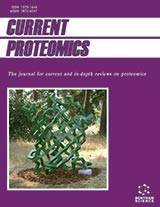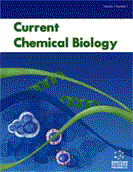Abstract
Drug resistance is a major problem for non-small cell lung cancer (NSCLC) treatment due to mutations in patients’ DNA sequences. It is now possible to obtain the human genome information easily based on the high-throughput sequencing technology, so personalized medicine can become a reality.
Based on mutation data of 168 patients with stage IIIB and IV NSCLC. We use computational method to predict the homo-dimers and hetero-dimers formation and compute the binding free energy of complexes (between drugs and proteins). For the gefitinib and erlotinib as two common drugs used in patient's therapy, we compute the possible 3D structure of epidermal growth factor receptor (EGFR) mutant- inhibitor complex. Rosetta and Amber are used for molecular dynamics analysis and simulation. The PRISM protocol is used to predict the binding energy based on similar protein-protein interaction surfaces. Multiple factors, including the mutant proteins surface geometry change, the number of hydrogen bonds change and the electronic change of the surface, are taken into account when in evaluating the binding free energy.
Our results suggest that the mutation position is very important for dimer formation and it affects the drug’s binding strength with EGFR. Mutations such as L858R and T790M which do not happen on the protein interaction surface can hardly affect the formation of dimers. Patients with the delE746_A750 mutation can obtain a good therapy by using gefitinib instead of erlotinib. By comparing the binding free energy to form a homo- or heterodimers, we find that the L858R mutant will incline to form a hetero-dimer rather than a homo-dimer.
Keywords: Dimer formation, EGFR, drug resistance, mutation, hetero-dimer, homo-dimer.
Current Bioinformatics
Title:A Computational Study of Three Frequent Mutations of EGFR and their Effects on Protein Dimer Formation and Non-Small Cell Lung Cancer Drug Resistance
Volume: 11 Issue: 3
Author(s): Zhiyong Shen, Debby D. Wang, Lichun Ma, Hong Yan, Maria P. Wong and Victor H.F. Lee
Affiliation:
Keywords: Dimer formation, EGFR, drug resistance, mutation, hetero-dimer, homo-dimer.
Abstract: Drug resistance is a major problem for non-small cell lung cancer (NSCLC) treatment due to mutations in patients’ DNA sequences. It is now possible to obtain the human genome information easily based on the high-throughput sequencing technology, so personalized medicine can become a reality.
Based on mutation data of 168 patients with stage IIIB and IV NSCLC. We use computational method to predict the homo-dimers and hetero-dimers formation and compute the binding free energy of complexes (between drugs and proteins). For the gefitinib and erlotinib as two common drugs used in patient's therapy, we compute the possible 3D structure of epidermal growth factor receptor (EGFR) mutant- inhibitor complex. Rosetta and Amber are used for molecular dynamics analysis and simulation. The PRISM protocol is used to predict the binding energy based on similar protein-protein interaction surfaces. Multiple factors, including the mutant proteins surface geometry change, the number of hydrogen bonds change and the electronic change of the surface, are taken into account when in evaluating the binding free energy.
Our results suggest that the mutation position is very important for dimer formation and it affects the drug’s binding strength with EGFR. Mutations such as L858R and T790M which do not happen on the protein interaction surface can hardly affect the formation of dimers. Patients with the delE746_A750 mutation can obtain a good therapy by using gefitinib instead of erlotinib. By comparing the binding free energy to form a homo- or heterodimers, we find that the L858R mutant will incline to form a hetero-dimer rather than a homo-dimer.
Export Options
About this article
Cite this article as:
Shen Zhiyong, D. Wang Debby, Ma Lichun, Yan Hong, P. Wong Maria and H.F. Lee Victor, A Computational Study of Three Frequent Mutations of EGFR and their Effects on Protein Dimer Formation and Non-Small Cell Lung Cancer Drug Resistance, Current Bioinformatics 2016; 11 (3) . https://dx.doi.org/10.2174/1574893611666160322233746
| DOI https://dx.doi.org/10.2174/1574893611666160322233746 |
Print ISSN 1574-8936 |
| Publisher Name Bentham Science Publisher |
Online ISSN 2212-392X |
 28
28 1
1
- Author Guidelines
- Bentham Author Support Services (BASS)
- Graphical Abstracts
- Fabricating and Stating False Information
- Research Misconduct
- Post Publication Discussions and Corrections
- Publishing Ethics and Rectitude
- Increase Visibility of Your Article
- Archiving Policies
- Peer Review Workflow
- Order Your Article Before Print
- Promote Your Article
- Manuscript Transfer Facility
- Editorial Policies
- Allegations from Whistleblowers
Related Articles
-
Peptides as Carrier for Tumor Diagnosis and Treatment
Current Medicinal Chemistry - Anti-Cancer Agents Retraction Notice: Protein Identification in Sub Proteome Fractions of Breast Cancer Cells by OFFGEL-IEF and iTRAQ Labeling
Current Proteomics TRIM45 Suppresses the Development of Non-small Cell Lung Cancer
Current Molecular Medicine Immune Checkpoint Inhibitors in AML-A New Frontier
Current Cancer Drug Targets A Patent Review on the Use of L-Asparaginase in the Treatment of Acute Lymphocytic Leukemia
Recent Advances in Drug Delivery and Formulation Synthesis and Anticancer Activity of Phthalimido and Naphthalimido Substituted Dihydropyrimidone Conjugates
Letters in Drug Design & Discovery Pharmacokinetics of Polymeric Micelles for Cancer Treatment
Current Drug Metabolism The Potential of Secondary Metabolites from Plants as Drugs or Leads Against Protozoan Neglected Diseases – Part I
Current Medicinal Chemistry Cephalosporin Conjugated Sulfonamides: Synthesis, Characterization and Anticancer Activities
Letters in Drug Design & Discovery Immunoliposomes in Acute Myeloid Leukaemia Therapy: An Overview of Possible Targets and Obstacles
Current Medicinal Chemistry Chemokine Like Receptor-1 (CMKLR-1) Receptor: A Potential Therapeutic Target in Management of Chemerin Induced Type 2 Diabetes Mellitus and Cancer
Current Pharmaceutical Design Chemical Libraries Towards Protein Kinase Inhibitors
Combinatorial Chemistry & High Throughput Screening Docetaxel/2-Hydroxypropyl β -Cyclodextrin Inclusion Complex Increases Docetaxel Solubility and Release from a Nanochannel Drug Delivery System
Current Drug Targets Histone Deacetylase Inhibitors Target Diabetes via Chromatin Remodeling or as Chemical Chaperones?
Current Diabetes Reviews Incidentally Detected Increased FDG Uptake in Bowel and its Correlation with Hystopathological Data: Our Experience in a Case Series Study
Current Radiopharmaceuticals Genistein: A Boon for Mitigating Ischemic Stroke
Current Topics in Medicinal Chemistry Cyclooxygenase-2: Potential Role in Regulation of Drug Efflux and Multidrug Resistance Phenotype
Current Pharmaceutical Design Immunomodulation Mechanism of Antidepressants: Interactions between Serotonin/Norepinephrine Balance and Th1/Th2 Balance
Current Neuropharmacology Lipids and Their Derivatives: By-Products Used as Essential Building Blocks for Modern Drug Delivery Systems
Current Drug Targets Combination Treatment of Glioblastoma by Low-Dose Radiation and Genistein
Current Radiopharmaceuticals

















.jpeg)








